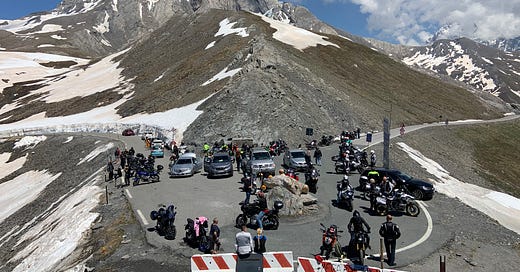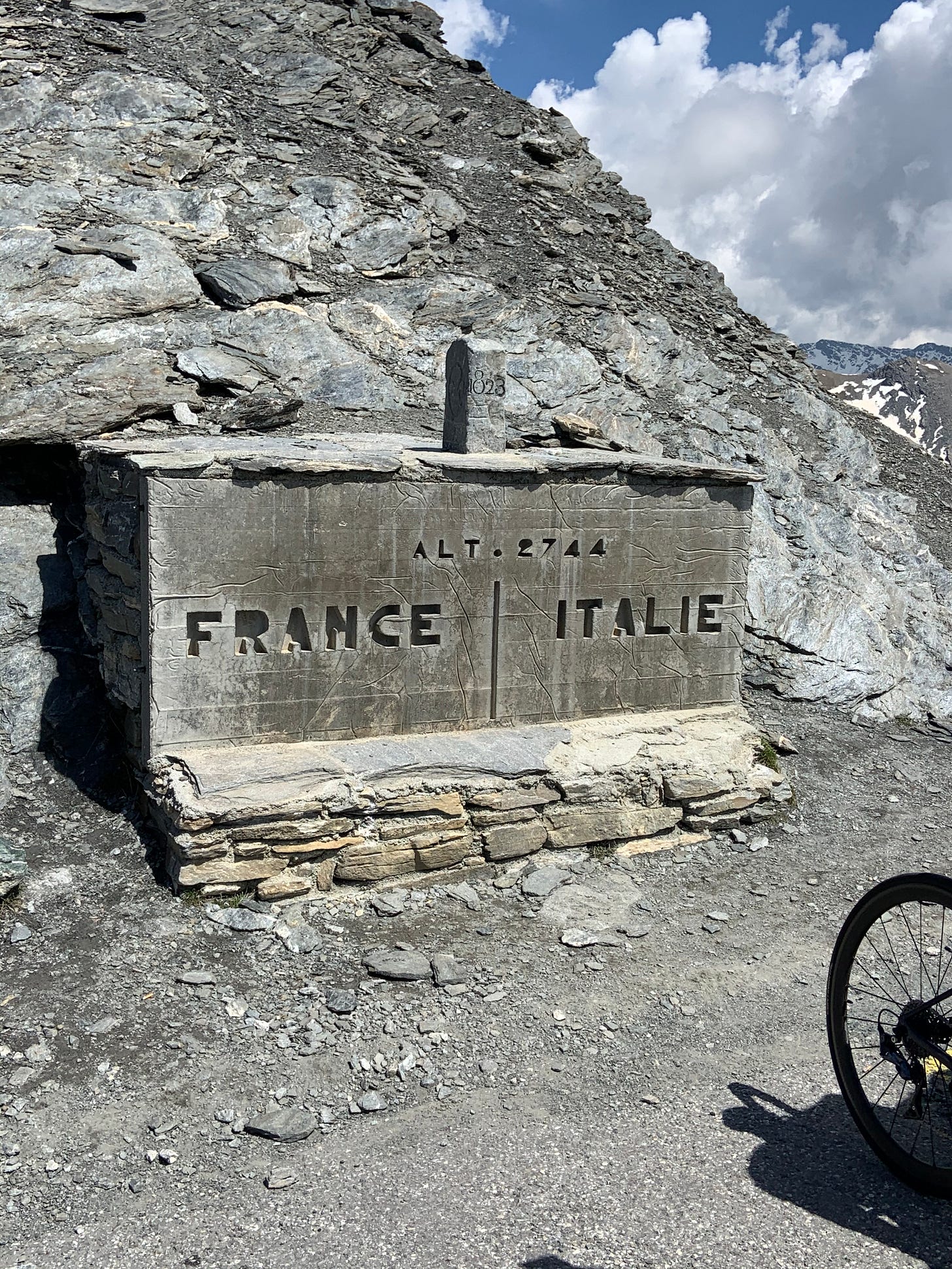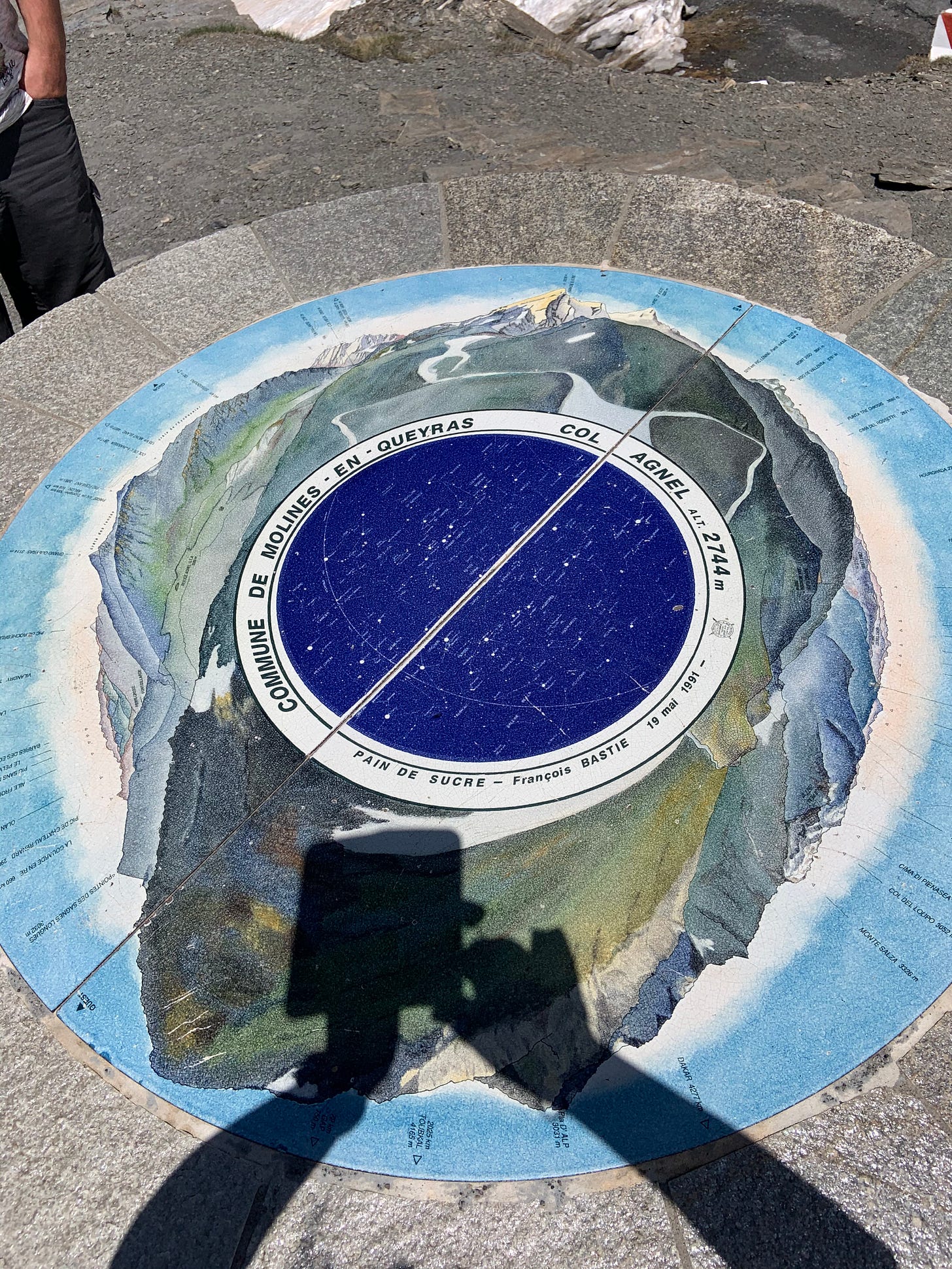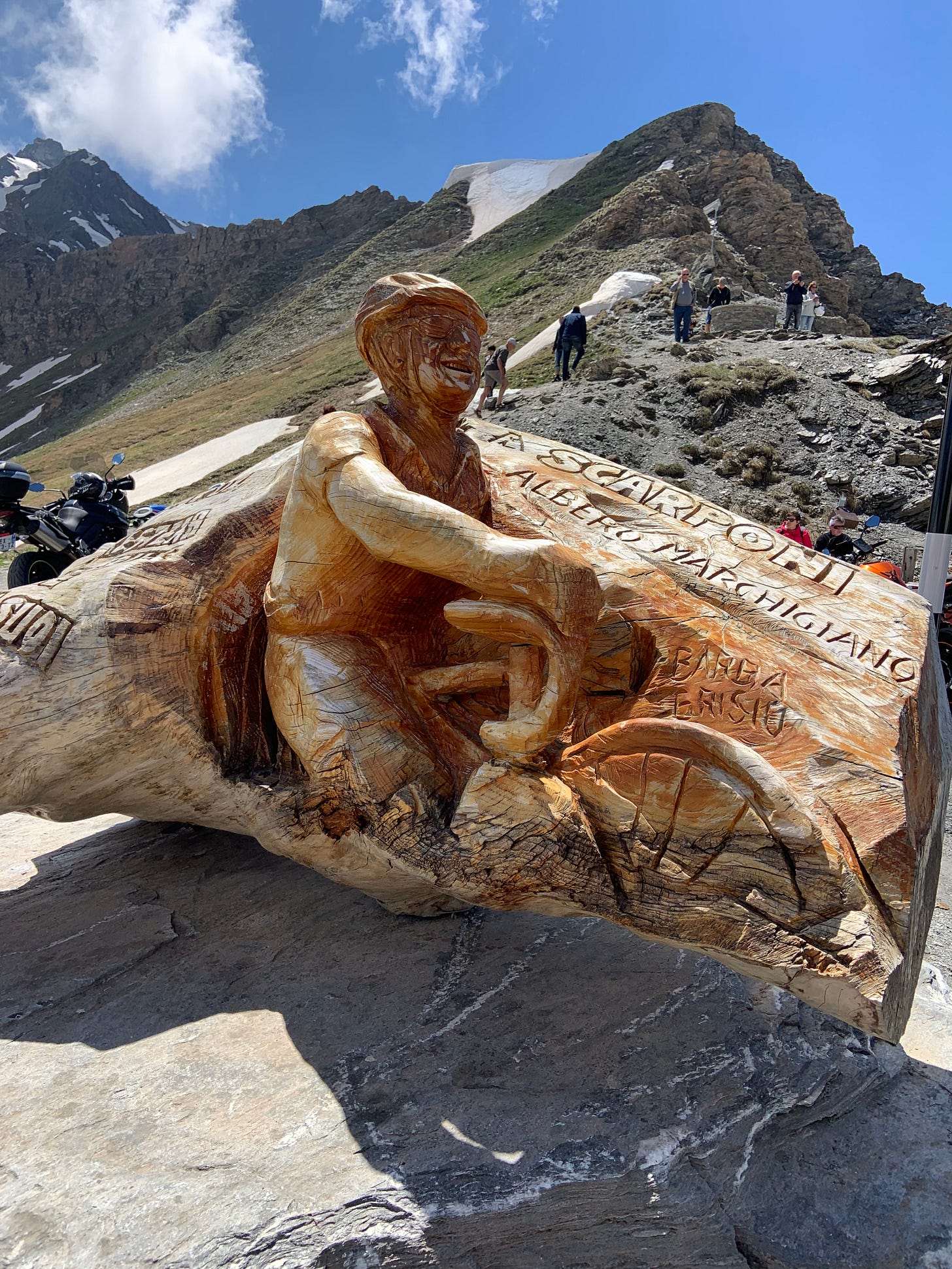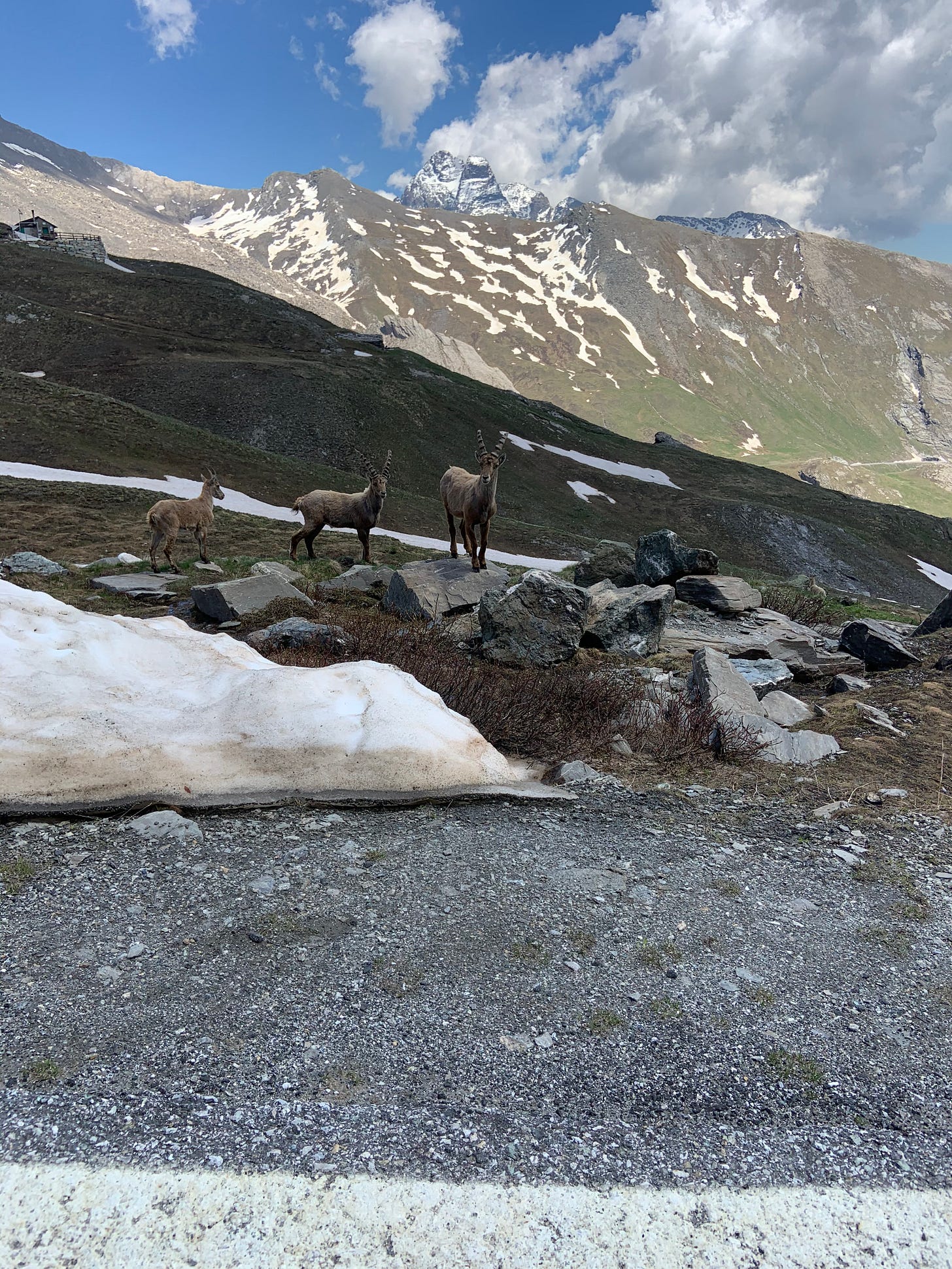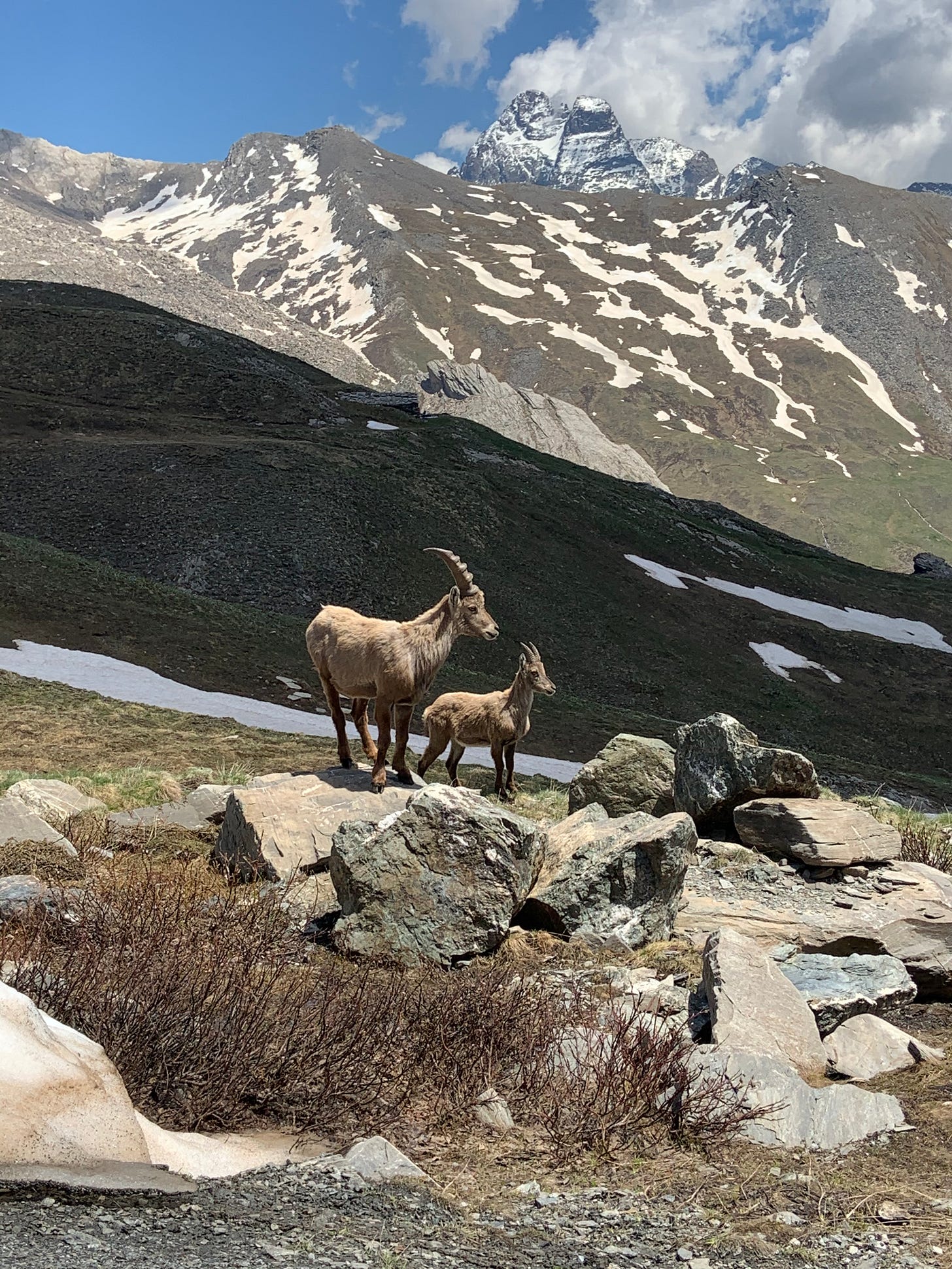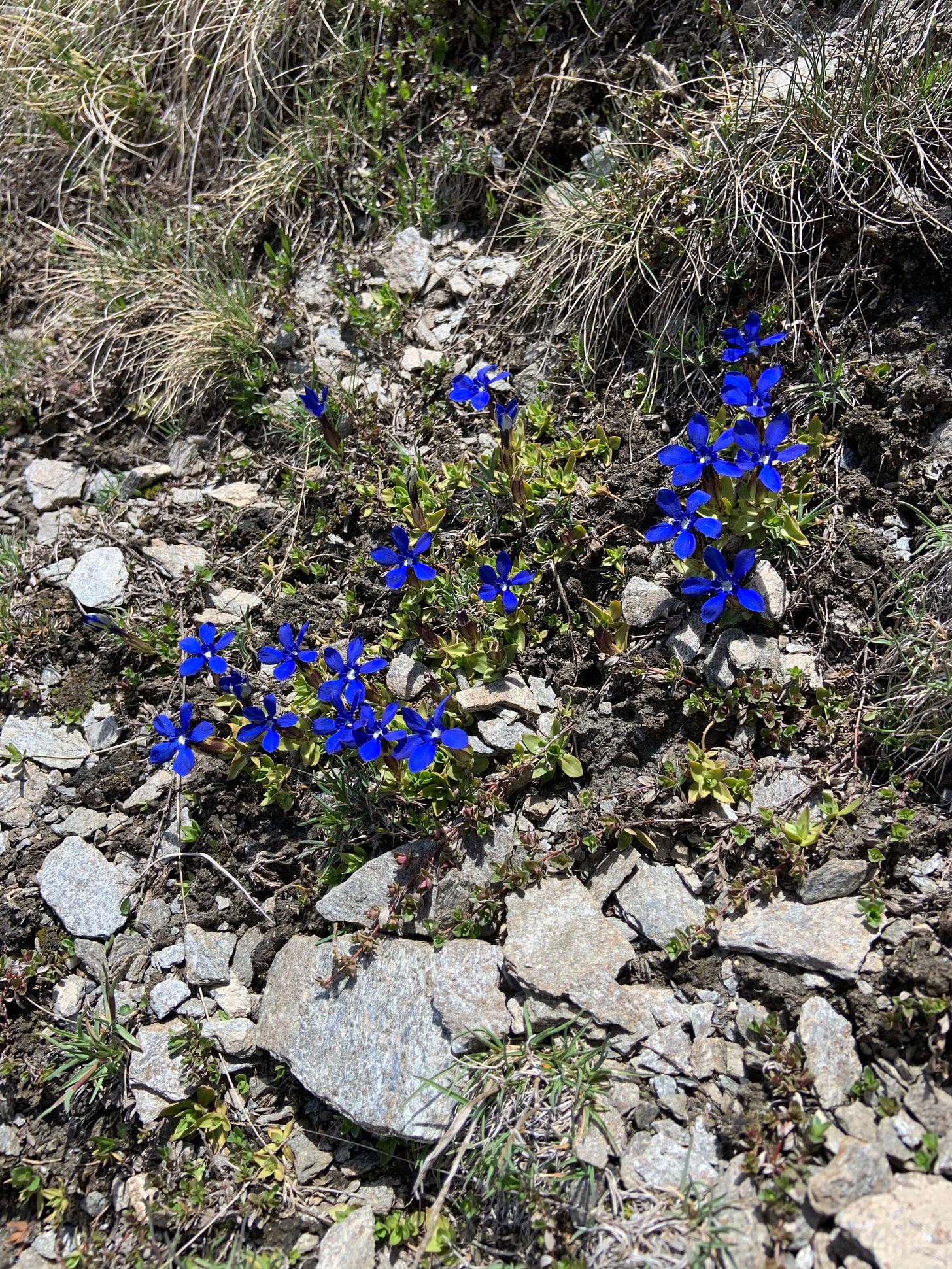The Heartwarming Secrets of the Alpine Passes
The Alpine passes, magnificent gateways through the towering ranges of the European Alps, have been pivotal for trade, migration, and cultural exchange for centuries. Read some heartwarming stories
All photos are from the pass Col Agnel, June 13, 2021
The Heartbeat of the Alps
As long as the mountains have stood, the Alps have been a mighty wall and a bridge between worlds. Long ago, when the first hunters roamed the valleys, they carved paths through the snow and stone. Then came the Romans, who saw not just barriers but highways—great passes like St. Bernard and Simplon, where soldiers marched and merchants traded silk, salt, and stories.
By the Middle Ages, the Alps hummed with life. Pilgrims trudged toward sacred sites, traders bartered wool and wine, and the Gotthard Pass became the beating heart of Europe, linking north and south. The mountains were never silent—they echoed with footsteps, hoofbeats, and the creak of wooden carts.
Then, the world changed. Steam and steel brought trains tunneling through the rock, shrinking distances. The mighty Gotthard Base Tunnel, a modern marvel, now carries travelers beneath the peaks in minutes—yet the old paths still whisper of the past.
Life in the High Places
The people of the Alps have always danced with the mountains. They built wooden chalets with sloping roofs to shrug off winter’s weight, raised cows whose bells chimed like music across the meadows, and spun tales around fires as the wind howled outside. Even now, festivals burst with yodeling, fiddle tunes, and the slap of leather shoes on dance floors.
But life here is not just postcard-perfection. The modern world tugs at the valleys—young folks leave for cities, ski resorts sprawl where wildflowers once grew, and the glaciers shrink under a warmer sky. Still, the mountain folk adapt. Some turn to eco-friendly tourism, guiding hikers and cyclists through the passes their ancestors once walked
The Merchant and the Mountain
Great St. Bernard Pass, 58 AD
The wind screamed like a wounded wolf. Felix tightened his cloak, his breath a white plume in the predawn dark. Around him, the mules stamped their hooves, their loads of Ligurian olive oil and Gallic wool crusted with ice.
"Madness," his guide had muttered the night before, staring at the pass. "No one crosses after the first snow."
But Felix had debts in Augusta Raurica that didn’t care about seasons. As the trail vanished under fresh powder, he understood why the Celts called these mountains the "Bone Houses."
A crunch. A shout. One of the mules lurched sideways, its leg swallowed by a hidden crevasse. Felix lunged, grabbing its harness as the beast screeched. For a heartbeat, the entire caravan teetered on the edge of the world.
Then—hands. Soldiers from the outpost above, their faces raw and cold, hauling them back. "You’re lucky," their centurion growled, thrusting a cup of hot wine at Felix. "The gods must love fools."
By noon, the sky blazed blue. Felix stood at the summit, watching the clouds unravel below him like torn silk. Somewhere down that twisting path lay markets humming with Frankish silver, Alpine cheese wrapped in maple leaves, and his name cleared from the ledger.
He grinned. The mountain had tried to eat him. But Rome’s roads—and Roman stubbornness—were harder to break than ice.
The Cyclist’s Playground
Then some come not on foot, but on two wheels. The Alps have become a pilgrimage for cyclists, drawn by the same winding roads that once challenged Marco Scarponi, a rider who loved these climbs like a poet loves words. His spirit lingers on every switchback, every lung-burning ascent rewarded with a rush of wind and a view that steals your breath.
Now, bike tours weave through valleys and over peaks, where riders from across the world gasp (and sometimes groan) at the beauty. Like the legendary Cranford events, there are races where friendships are forged in sweat and shared struggle. As wheels spin, they bring new life to villages, where cafes serve steaming coffee to weary travelers and old traditions find new fans.
The Alps are more than rock and ice. They are a story—of paths carved by time, of people who bend but never break, and of adventurers who come seeking magic on two wheels. And the tale isn’t over yet.
Would you like to hear more about a particular chapter? Maybe the daring Roman traders, the festivals under the stars, or what it feels like to pedal toward the clouds? The mountains have endless stories to tell.
Two Wheels to the Sky
Gotthard Pass, Present Day
"Why did I let you talk me into this?" panted Luca, his bike wobbling as the road coiled upward like a serpent.
Ahead, his friend Elena laughed, her legs pistons. "Because Scarponi rode this in the rain!"
The gradient hit 14%. Luca’s thighs burned. The switchbacks had no mercy—just endless stone and the occasional cheer from a roadside hiker. Then, a gust of wind peeled back the clouds, and suddenly the valley unfurled beneath him: emerald slopes, a hawk circling, the distant glint of a lake.
Elena was already at the summit, arms raised. "Told you!" she crowed as Luca collapsed onto the grass. A farmer handed them wedges of cheese from his backpack. "Eat. The mountain feeds those who respect it."
Later, flying downhill at 50 kph, Luca whooped into the void. The Alps weren’t just a challenge—they were a conversation. Every pedal stroke echoed the merchants, the soldiers, the cyclists who’d come before.
And as the sunset turned the peaks to liquid gold, he finally understood Scarponi’s obsession. Some roads didn’t just lead through the mountains but straight into their soul.
"The Ibex Parliament"
The meadow exploded with color—crimson alpine poppies and electric-blue gentians—but they were what made Lukas freeze mid-step.
Twelve ibex stood in a loose semicircle on the outcrop above him, their horns curling like scimitars against the sky and not fleeing, not charging. Just... watching. The oldest male’s beard was grizzled, and one horn was notched from battles. He tilted his head as if Lukas were a puzzling new shrub species.
"Uh. Hallo?" Lukas whispered, gripping his hiking pole like a ceremonial staff. The wind carried the musky scent of wet fur and warm rock.
A younger ibex—bold, with horns still glossy—took two steps forward and sniffed the air. Behind him, a female nudged her kid, as if saying, "Pay attention, this is how humans behave."
Then: a sound Lukas would swear to forever. The notched male chuffed, a noise halfway between a cough and a laugh, and the entire group turned in unison, leaping onto cliffs that defied gravity. Within seconds, they were just golden blurs against the limestone.
"Grüezi," called an amused voice. An elderly shepherd emerged from the treeline, his boots crushing wild thyme. "They like to judge hikers. Last week, they stared at a man eating a banana for ten minutes."
Lukas burst out laughing. The ibex had become the mountains’ gatekeepers—and he’d just passed some unspoken test.
Behind the Scenes:
Ibex DO curiously observe humans, especially in spring when they’re bold after winter.
That notched horn? Real ibex break them in dominance fights—his scars tell a story.
The shepherd? Totally a cameo from our grumpy old-timer.
Peak Hour Traffic
June in the Alps, and the ibex had officially invented tourism.
Miriam slammed on her rental car’s brakes as a shaggy, barrel-chested male strolled onto the Gotthard Pass road with the entitlement of a Swiss CEO. Behind him, an extended family materialized from the cliffs—yearlings skittering, females flicking their ears at minivans, adolescents practicing their "I’m a majestic mountain spirit" poses.
"Mama, that one’s taking a selfie with us!" a kid shrieked from a nearby Audi. Sure enough, a young male with comically oversized horns was pressing his whiskered face against their window, nostrils flaring at the scent of schnitzel sandwiches.
A park ranger leaned on her neon vest, grinning. "They figured it out. Humans stop. Humans take photos. Humans sometimes drop snacks." She nodded to an ibex licking a Dorito dusted rock with disturbing focus.
Then—the grand finale. The alpha (you could tell by how he ignored everyone) leaped onto the road’s guardrail, balanced like a tightrope walker, and held the pose. Cameras exploded. A German cyclist gasped, "Mein Gott, he’s voguing!"
As suddenly as they came, the ibex melted back into the crags, except one. A teenager with half-grown horns lingered, chewing on a hiking sock he’d stolen from someone’s backpack. His eyes clearly said, "You’re weird. I like you."
Miriam drove off, giggling. The Alps’ real locals had just reminded her who these mountains truly belonged to.
Field Notes:
Ibex Tourism Tactics™: In June, they descend to lick mineral salts off roads (and occasionally car doors).
The Dorito Bandit: A real incident in Gran Paradiso National Park. (Rangers now beg hikers: "No nachos. They’ll follow you home.")
Voguing Ibex: Their cliffside struts have 100% more drama than any Instagram influencer.
Winter Invaders
The first snow had barely settled over the village of Zermatt when the ibex staged their annual coup.
Elsa nearly dropped her grocery bag when she turned the corner to find a dozen loitering by the bakery like hungover ski tourists. The dominant male—Herr Notchhorn, as the locals called him—was licking condensation off the cheese shop’s window. A juvenile stood on a BMW, peering into the sunroof with disturbing interest.
"They’re back," sighed the postman, stepping over a dozing female. "Last year, one ate Frau Müller’s geraniums. Whole flowerbox. Thorns and all."
It was survival, not mischief (though the line blurred). As the alpine winds howled above 2,000 meters, the herd traded icy cliffs for heated driveways and, if lucky, the occasional shovelled path. Their thick winter coats made them look like grumpy, overgrown teddy bears.
Then came the real spectacle: The Great Salt Heist.
By January, the ibex had memorized every road maintenance shed. They’d wait, ears twitching, for workers to spread grit for icy sidewalks—then descend like furry pirates, licking the salt with the single-minded focus of wine connoisseurs.
"They’re worse than the après-ski crowd," laughed the butcher, watching a young male try (and fail) to steal a broom. But no one truly minded. When the blizzards came, villagers would toss apple cores onto their porches, whispering "Guten Appetit" to shadows with curling horns.
After all, the ibex just reminded them: This wasn’t a human village. It was a winter embassy—and the mountains always kept the keys.
Behind the Scenes:
Science Bit: Ibex descend in winter because digging through snow for grass burns more calories than they’d gain. Pavement? All-you-can-eat buffet.
Architectural Review: A Swiss study found that ibex prefers licking modernist concrete (with a higher mineral content) over traditional wood. Snobs.
Local Legend: They say an ibex once pushed a snowblower’s start button with its nose. (It's unconfirmed, but everyone believes it.)
The mountains can put things in perspective, don’t they? Those ibex, blooming flowers remind us: The world keeps turning, seasons keep changing, and there’s always a glimmer of wild magic waiting to be found.
INFO on Alpine Passes
ARE YOU INTERESTED IN OTHER STORIES?
They are here: https://amzn.to/42zESYu with complete descriptions
P.S.
“Either My Son or Nobody” is now available in a third edition in digital formats.
“Those Eyes Behind The Glass Door” is available, too.
You can purchase them here by contacting me for €5.00
I do not have paperbacks.
Please email me at liudmila.books@gmail.com to request my stories and specify your preferred file format. I typically respond within one working day.
I can add dedication on request.

